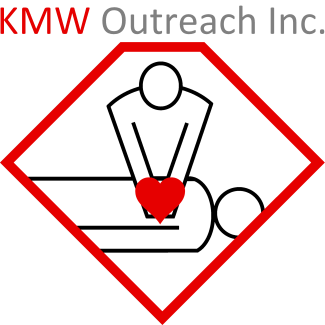When it comes to first aid, there are a lot of myths that go around about what you should do in different emergencies. Many of them are supported by Hollywood in TV shows and movies and many of these myths can even make the emergency worse.
We have compiled some of the top myths that we see and hear about regularly in the media. As you read through, take note of which of these first aid myths you once believed to be true?
Myth 1: CPR is what brings people back alive, and they wake up immediately.
We’ve all seen the movie scenes where the nurses/doctors give one final punch to the center of the chest and the patient is miraculously alive. Many people can see that this is an exaggeration, but did you know that the CPR compressions aren’t what saves the person? And if the person’s breathing and pulse do return (from medicine and/or electricity), they will not wake up immediately. The body, and especially the brain, needs time to heal after this near-death experience.
Example:
Although the life-saving CPR is not pictured, it is heavily implied in this miraculous wake-up scene from Twilight:
https://www.youtube.com/watch?v=EDDtjfmS0Hs (jump to 2:15)
What is True:
CPR pushes oxygen-rich blood to the person's brain so that brain damage does not set in while the heart and lungs aren't working. It only takes about 4-6 minutes of no blood going to the brain for the damage to start to set in. The CPR compression simply keeps blood going to the brain to keep it functioning as best as possible throughout this scenario. Depending on when CPR is started and how much damage was done, it is always a waiting game after CPR to see if/when the person will wake up and how much brain damage was (potentially) done.
Myth 2: An AED (defibrillator) will shock a flatline.
Another scene I’m sure we’ve all seen in movies and TV is when the patient “flatlines” on the heart monitor and the AED is subsequently used. When an AED analyzes a person’s heart rhythm, if it finds no electrical activity (i.e., asystole or a flatline), it will NOT shock the patient. These machines are used to reset the electrical activity in the heart. Therefore, if there is no activity, an electrical shock won’t be productive or work.
Example:
Grey's Anatomy can be used as an example of correct and incorrect use of an AED. In earlier seasons, they shock flatlines like in this dramatic episode of Grey's Anatomy when George and Izzy fight for their life; Izzy goes into a flatline rhythm, and the defibrillator is used:
https://www.youtube.com/watch?v=6t5irzXUK_E&list=PLknRgZ9LF-KWqdoEo9By1A-xrwEpmli4d&index=18 (skip to 1:37)
What is True:
AEDs will shock 2 heart rhythms that happen when the electrical activity in the heart is improper. They are called ‘ventricular fibrillation’ and ‘ventricular tachycardia’.
Check out this video from a later season of Grey's Anatomy when they use the proper rhythms:
https://www.youtube.com/watch?v=07DZzqAouLo (skip to 1 minute)
Myth 3: You can only use a public AED if you are trained.
Due to the "medical" nature of AEDs, many people believe only healthcare professionals or other trained personnel should use an AED. In addition, the machines that are used in the movies are quite different from the ones that are available for public access and use. Many people do not even recognize what a real, public-access AED looks like. They only ever think of the giant machines used by paramedics and doctors on TV and don't realize there are much smaller, user-friendly versions that are used in real life.
Example:
Here is an example of the large machines that are ONLY used in movies:
https://www.youtube.com/watch?v=lNjU7yeC12I&list=PLknRgZ9LF-KWqdoEo9By1A-xrwEpmli4d&index=27 (jump to 1:15)
What is True:
In Ontario, you do not need to be trained to use a publicly accessible AED. These machines can be found in various public spaces across the province including community centers, sports facilities, schools, malls, restaurants and department stores. These machines are intended to be used by anyone who has a grade 6 level English comprehension. When the machine is grabbed and turned on, it walks the user step-by-step through the process of using it.
AEDs are extremely safe to use and there are no legal ramifications from using one.
Myth 4: You must give rescue breaths during CPR
CPR is always one of the most dramatic things done on TV. There's that moment when someone is dragged out of the water and mouth to mouth is performed and they dramatically wake up. These scenes make a lot of people think they must perform mouth-to-mouth to perform efficient CPR.
Example:
Get ready for a few Grey’s Anatomy references throughout these examples! Here’s an example of CPR with rescue breaths being done on Meredith after drowning.
https://www.youtube.com/watch?v=l3we3TnT4Ew - skip to 1:00
What is True:
You do not need to perform rescue breaths at all during CPR! Compression-only CPR is completely fine. It keeps blood pumping to the person’s brain so that it can continue to function while the heart and lungs are not. However, it is not recommended for babies and children as their small bodies do not hold the same amount of oxygen, so it is encouraged to perform rescue breaths for them.
Stay tuned for future blogs with more CPR Myths!






